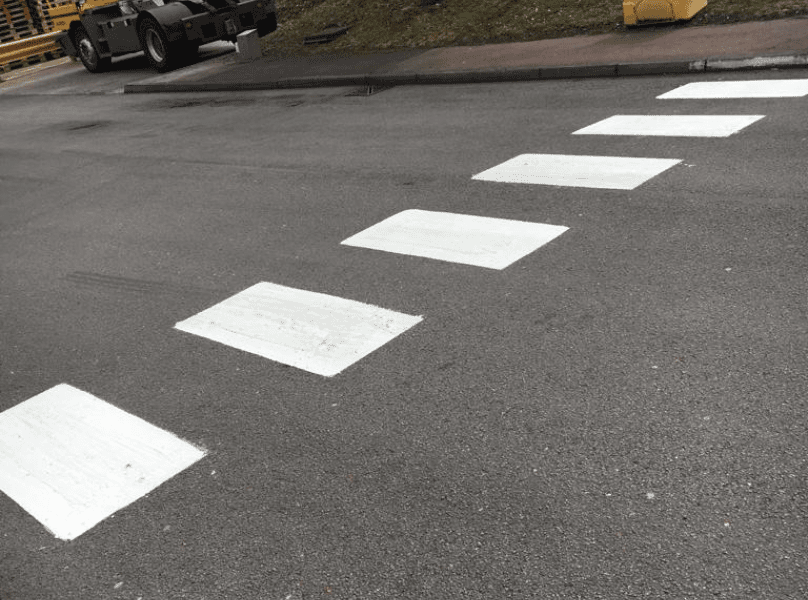Among the various types of road markings, are crossing markings. These markings and the accompanying signals, as well as the obvious of allowing pedestrians to cross the road in safety, also help in ensuring efficient traffic flow.
In this short article, we look a little closer at road crossings and their markings, by listing the various types of crossings and how they function in providing pedestrians with a safe, convenient, and efficient way to cross our busy roads.
Zebra Crossings
Zebra crossings, with their distinctive, thick black and white stripe road markings, and their flashing beacons, aka the famous Belisha beacons, are probably the most recognizable of UK road crossings. Zebra crossing markings are designed to alert drivers of a crossing point from a distance and let them know that if anyone is crossing or waiting to cross the road, they must be given priority.
Did you know? – Belisha beacons were named after the politician Leslie Hore-Belisha, who in 1934 introduced the amber-coloured globe lamp as an additional method of warning approaching drivers of a crossing.
Pelican Crossings
Pelican crossings can consist either of simple dotted line markings, or the classic zebra (black and white striped markings), with the distinguishing feature being a pedestrian-controlled traffic light system.
The term ‘pelican’ crossing was created using the first letters of PEdestrain Light CONtrolled, and the crossing itself was brought in as a safer alternative to the traditional zebra crossing in areas where more accidents had occurred.
Did you know? – When approaching a pelican crossing a flashing amber light means you’re allowed to proceed with caution, but if the amber light is steady, it means you need to slow down and be prepared to stop.
Puffin Crossings
A puffin crossing is similar to a pelican crossing with simple dotted line markings on either side, however, puffin crossings are equipped with sensors designed to detect when a pedestrian wants to cross and to give them time to do so.
A puffin crossing will normally be equipped with two sensors including a PCD (pedestrian crossing detector) and a PKD (pedestrian kerb detector) which work in unison to ensure pedestrian safety and traffic efficiency.
Did you know? – Since 2016, the UK government has been phasing out pelican crossings and replacing them with puffin crossings, which means that since 2016 no new pelican crossings can be or have been installed on public highways.
Toucan Crossings
A toucan crossing is a specific crossing that allows pedestrians and cyclists to cross at a certain point in the road. To allow for dual crossing, a toucan crossing is 4m wide, and has lane markings to divide pedestrians and cycles.
There are two types of toucan crossings, including the newer types which show a green bicycle next to a green man, both of which alternate to red, and older crossings, without a red bicycle, that permit bicycles to cross at any safe time.
Did you know – unlike puffin or pelican crossings, toucan crossings display a steady amber light before turning back to green, and toucan crossings were so named because ‘two-can cross’, which over time turned into ‘toucan’ crossing.
Looking for a road marking service?
If you’re looking for a road marking service for the installation of line markings on any road, car park, warehouse, or playground anywhere in the UK, contact City Road Markings, one of the UK's leading line marking (including thermoplastic road marking), and surface coating experts.
